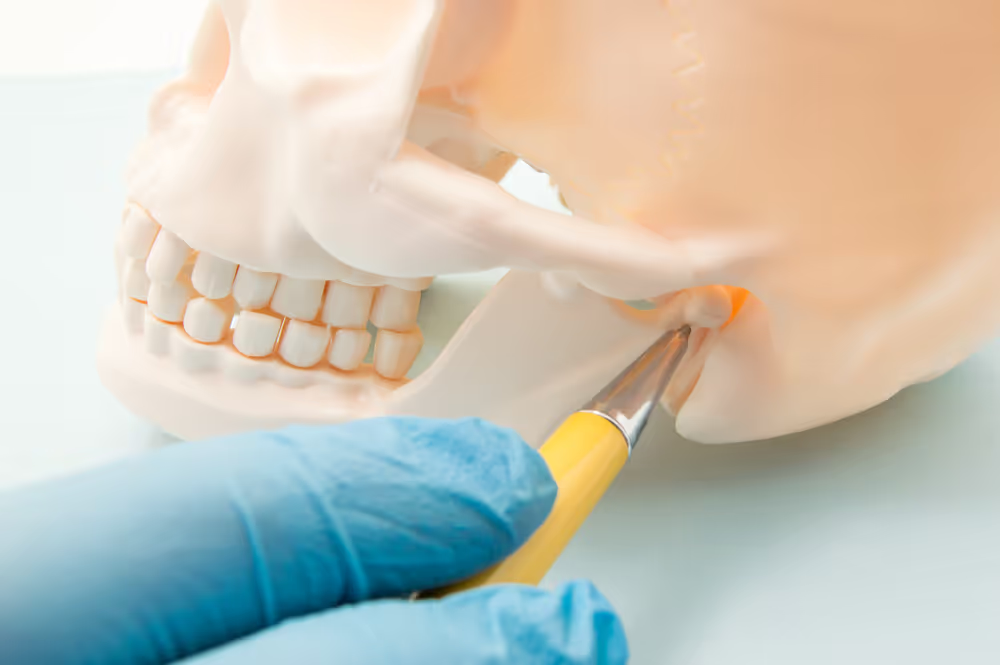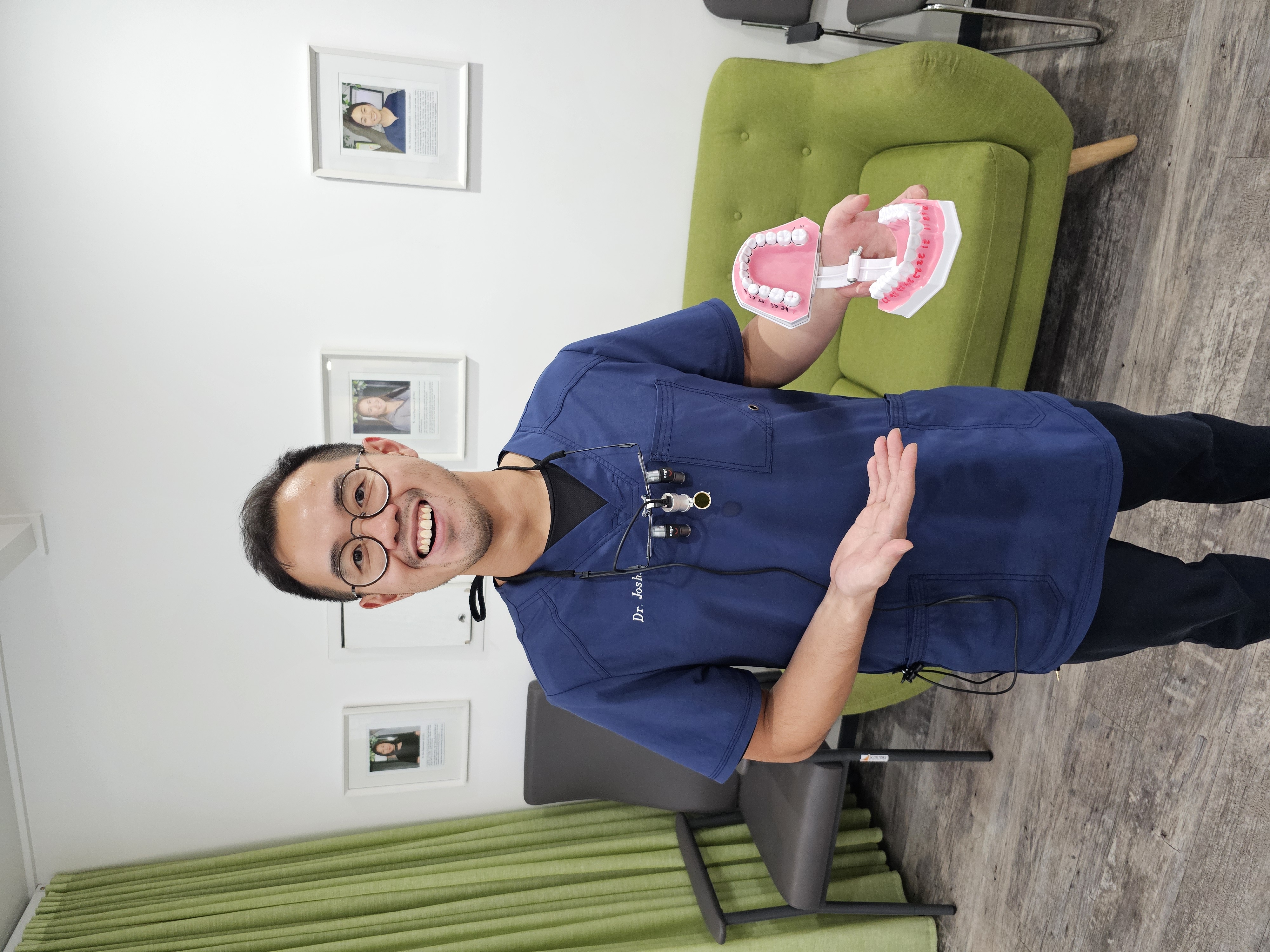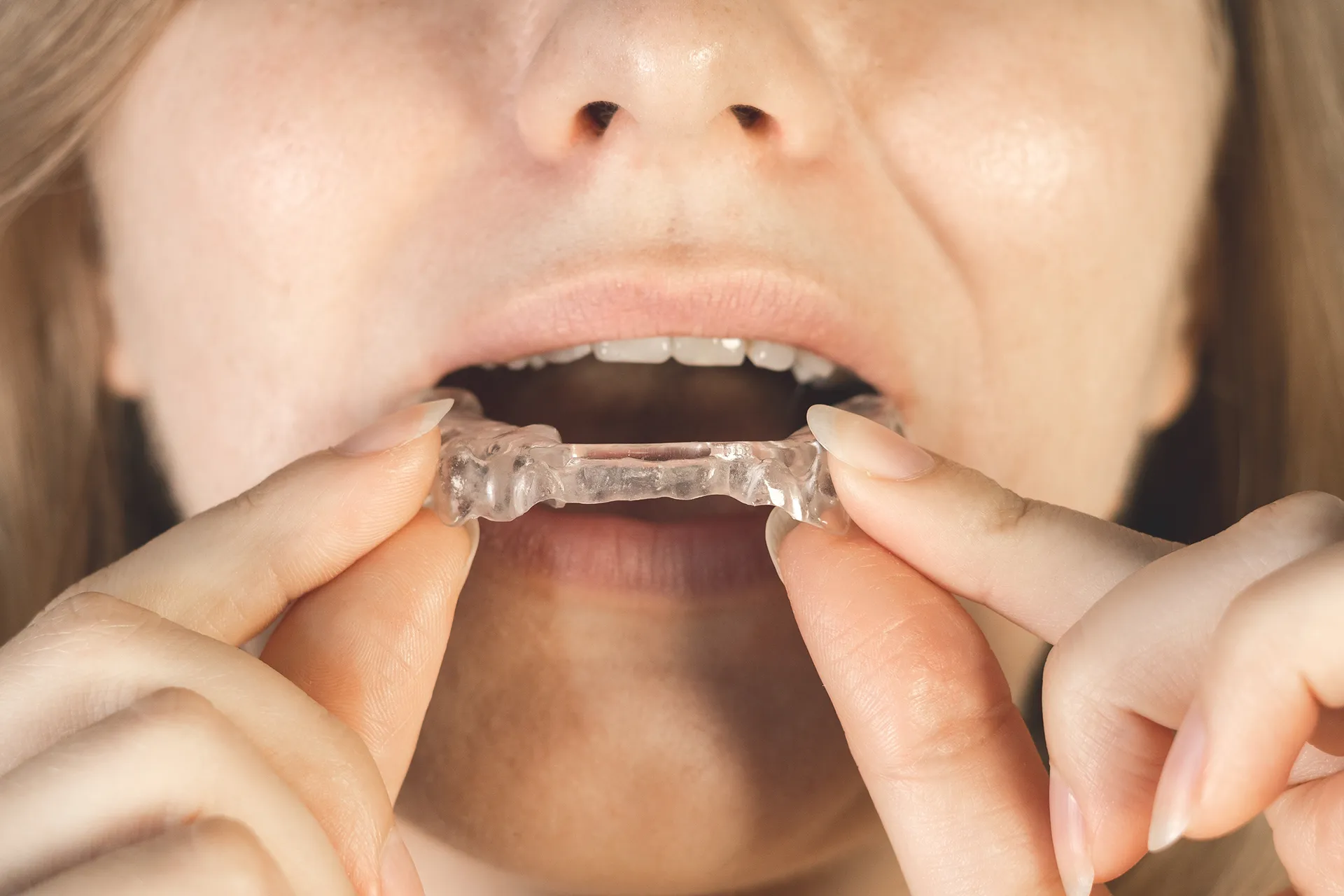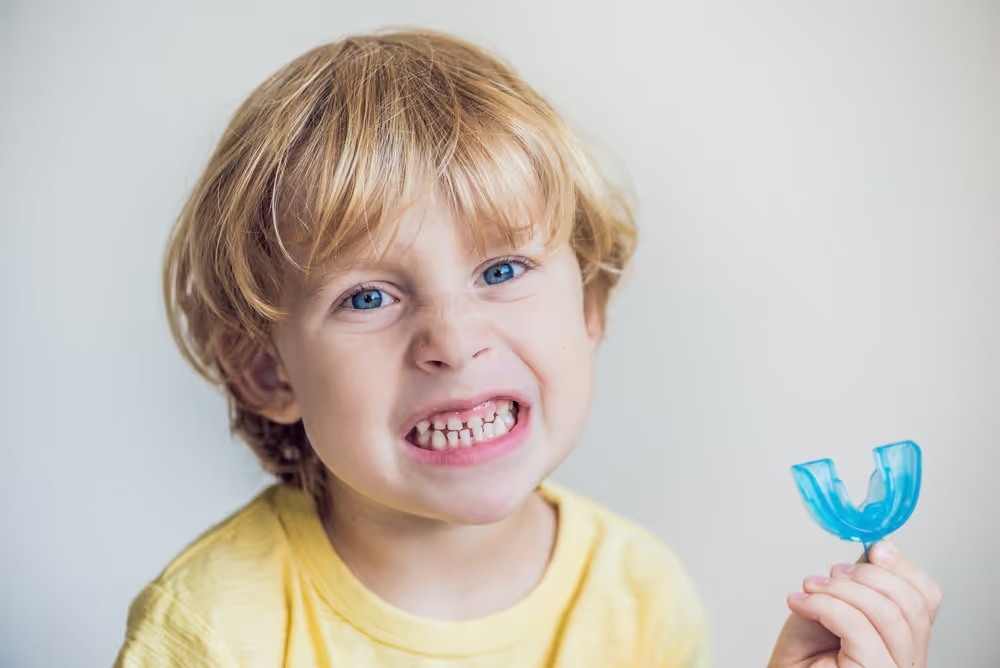

TMD stands for temporomandibular dysfunction as is an umbrella term that encompasses jaw joint pain, clicky jaw joints, muscle pain or muscle dysfunction in the jaw area. Marius Street Family dental have clinicians that have undergone extensive further training to treat TMD - our reception team can direct you to who is best for your condition.
We recommend a TMD consult if you have one or more of the following signs & symptoms:

Let's talk about treatment options and how we can manage it together.
Neurotoxin (eg. Botox is a common brand, we use Xeomin) Injections into the clenching muscles to relax them and reduce their forces. Reducing the overactivity of the muscle helps to relieve symptoms of tension, pain and inflammation. This lasts 3-6 months and is great for people with daytime clenching problems or for short term relief of muscle tension.
Decompression splints or night guards stop you from squishing your joint and allow space for healing of the joint. There are many designs depending on your needs.
MAS splint (mandibular advancement splint).
Low level laser therapy combined with muscle releases.
Laser therapy reduces the inflammation and speeds up healing. Often most of the pain is actually from the spasm of the chewing muscles. Identifying and releasing these relieves pain as well as improves your range of motion.
Medications such as anti-inflammatories and muscle relaxants can be used in combination with other treatment.
Muscle Exercises and releases - think physio for your face and jaw muscles.
Therapies such as dry needling/acupuncture, tensing, etc.
Addressing causative factors such as what caused the TMD. Most TMD is from long term imbalances in the body, clenching, grinding. Sleep breathing disorders, chronic pain, postural problems and muscular compensations are just some of the reasons! Dentists often need to work with other health professionals to get you the best long-term treatment plan.

Teeth grinding can result in damage to your teeth ranging from mild wear to severe cases of chips, loose teeth and extreme tooth and enamel wear. Additional effects can include sensitivity to heat/ cold and damage to restorations such as fillings. Often, a ‘grinder’ is not aware of the problem as we typically grind our teeth whilst asleep at night.
Teeth grinding should not be ignored, as whilst damage may not be apparent now, over time the continual grinding effect will wear away the teeth and cause crack lines/fracture. As most grinding occurs during your sleep, the most common solution is the use of a mouth guard called a splint to prevent damage against the teeth whilst grinding.
Dr. Stephenson has undergone additional training to learn about sleep apnoea and how to screen for it. Sleep apnoea is only one of the many disorders classified as ‘sleep breathing disorders’. Sleep apnoea is caused by a collapse of the airway or obstruction of the airway. 85% of the time (in adults) it is the base of the tongue that falls backwards and blocks the airway.
Signs and symptoms include: Wear on the teeth from grinding (but you probably won’t know because it’s at night), headaches or muscle soreness, daytime drowsiness – feeling tired all the time, snoring, high blood pressure, waking up/going to the bathroom through the night, reflux, diabetes/thyroid/hormone issues.
Treatment - Mandibular Advancement Splint (MAS)
If you do not have sleep apnoea, a standard splint is appropriate to protect your teeth from damage. However, a splint will make sleep apnoea worse, so it is critical we rule this out first. For OSA some patients find a special airway splint called a mandibular advancement splint can help them a lot. This holds the lower jaw forward out of the airway. The tongue and throat muscles attach into the lower jaw and these are what often cause obstruction of the airway at night.

Snoring, audible breathing and grinding in children is not normal. Sleep breathing disorder is not just a condition of older people. Children suffer too. Often it is enlarged adenoids or tonsils that block their airway at night. The symptoms are different with children. Instead of being ‘tired all the time’, children can show signs of ADHD, behavioural issues and difficulty focusing. This is as children are self-stimulating and become hyperactive when they are tired.
Children with sleep apnoea are 9x more likely to be in the bottom 10% of their class. We strongly recommend a screening and we can give a referral to the appropriate doctors (eg ENT) if we feel it is necessary.

Call us at (02) 6766 1766 or book online to schedule your consultation. Whether it’s a simple check-up or more complex issue, our experienced team is here to help. Let us take care of your smile with the compassion and expertise you deserve!